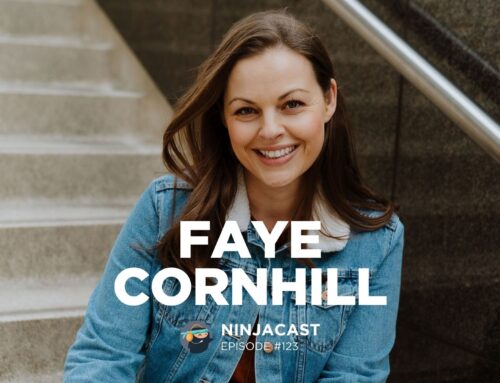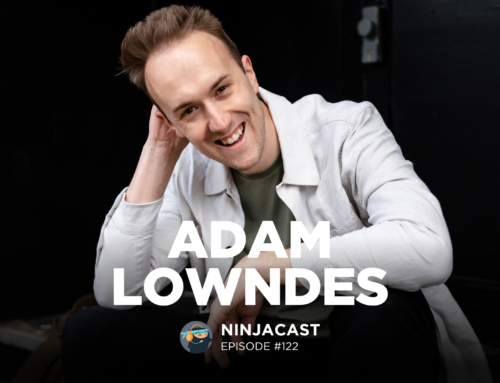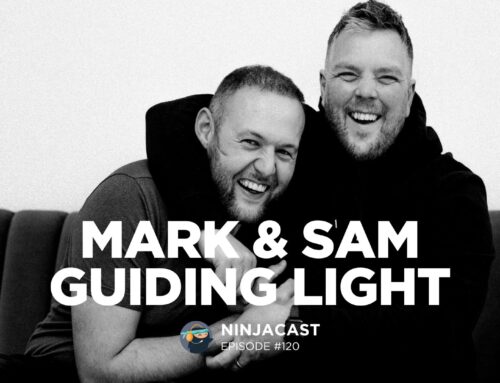081: Lucy Millet – How To Get More Second Shooting Jobs & Why You Shouldn’t Shoot In Manual Mode
November 30, 2022
“Don’t lose sight of the things that make you happy – both in your business & personally.”
LUCY MILLET
Hey everyone! It’s Sally here, from Studio Ninja. Today’s episode is all about Lucy Millet!
Lucy is a self taught wedding photographer and founder of The Unscripted Collective, a team of incredibly talented photographers and film makers all about authentic storytelling and raw emotion. She recently expanded her business to offer web design and help creative businesses get a killer website that converts. She also plans to start providing education and mentoring to help wedding creatives take their business to the next level.
Check out some of the biggest points from Lucy’s interview below:
Why is it important to tell a story in Wedding Photography?
So for me, storytelling and wedding photography is kind of a way to take your photos and your galleries to the next level, and obviously also to satisfy your client with something a bit more than just wedding photos.
I think it’s one of the best ways also for your couples to just rave about you and for you to get amazing reviews and couples to recommend you and everything. So the way I do this is that, the way I see it is couples looking through their galleries, they obviously, you want them to relive the day, but the way I see it is you also want them to feel the emotions as they’re looking through the photos. And to do this, you need to set the scene. So I do a lot of … I mean, everyone does venue shows, detail shots, everything. But the way I shoot those, I’m really going to think about how to set the scene.
I’m going to go in, I’m going to get different angles, different lenses sometimes, get the details, all that, just to kind of build emotion. So it’s not just, “Oh, a couple of landscape photos of the venue and everything,” then you go straight to prep. It’s just got that kind of transition from one scene to another. And it’s not just about venue shots, detail shots, all of that. It’s also about, so different angles of the same scene. So say you were shooting a scene doing bright prep, something’s happening. It’s not about just capturing that one image, it’s also moving around, getting you from a different angle. Also composition – it’s quite handy for sort of storytelling in the sense that I use a lot of things in the foreground or even people to use my, like frame my shots.
So you’ll have, I don’t know, the brides, having your makeup done, rather than just get the photo of her having your makeup done, I’ll go behind the bridesmaids and use her shoulders or this to kind of frame where the bridesmaids will be in the foreground, blurry, and then the bride will be in the background, you’ll see her, usually interacting with the bridesmaid stuff.
So it kind of sets the scene, it gives you context of with what’s going on, and it is a really great way to kind of link moments together in the gallery. So even, for example, the wedding dress. So if you’ve got a bride and she’s got a wedding dress, you’re going to take a picture of the dress. But I don’t just do that. I also ask, either ask or see if it happens naturally, either the bride or one of the bridesmaids to go and reach for the dress. And I take that picture, and then in the gallery it flows nicely from having the bride getting her makeup done. It doesn’t just jump to her being in her dress. You’ve got that kind of context, that kind of link of her reaching for the dress, grabbing the dress. And I just feel like it adds more to the story. And it’s really the best way to get amazing reviews from your couples and to get clients to refer you to other clients.

Do you think you’ve always had that storytelling style quite organically, or is it something that you’ve kind of been conscious of and developed?
So it actually is something that I did not have at all. This is where I kind of reflect back on the first wedding I shot, and looking through the photos, I was just shooting things that I thought looked good, not thinking about the couple, not thinking about what they would want to see, how they want to feel and everything. And it was just random pictures here and there, and it just didn’t have that storytelling kind of feel to it.
And I don’t know exactly when I kind of made the switch. I think it was from doing a lot of second shooting and being able to … Obviously as a second shooter you you work for someone else, you do, you help them out, but you can get your own shots and everything. So I was kind of like, “Okay, how can I better myself? How can I have better galleries, better pictures and everything?”
And that’s when I took the time to actually work more on that and try and just get random new details. Things like, sometimes it’s like, one picture I’d really like to take is if I’m shooting a London wedding is wherever we’re having the prep from, is going to be shooting through the window, but not just the window, having the window frame, and then shooting whatever the view is. Because that really sets the scene of that’s the London wedding, that’s the London view. So I started doing these random things like that, and then I kind of decided that was something that needed to be part of my branding and part of what I do.

If you can start your career all over again, is there anything that you’d change? Anything you’d do differently?
I think I would invest in education a bit more. That’s something I didn’t really do. So I spent a lot of time exploring Facebook groups and trying to read loads of different posts, like different groups on different subjects, mostly photography and business related. And then whenever someone came up with an issue saying, “Oh this happened, how do I fix it?” I would go through the comments and read the comments to find the answer and just, even if it didn’t apply to me, then I knew I could remember that if it did happen to me at some point.
But that’s a very, very long process and it took me a long time to learn everything I know now. So if I went back, I’d probably just, rather than do that and not waste time, but spend all this time doing that, I’d just invest in education. Couple of courses, it’s a bit of money, but it brings you so much, I think it’s worth it.

Thank you!
Thanks again to you all for joining us and a huge thanks to Lucy for joining us on the show!
If you have any suggestions, comments or questions about this episode, please be sure to leave them below in the comment section of this post, and if you liked the episode, please share it using the social media buttons you see at the bottom of the post!
That’s it for me this week, I hope you all enjoyed this episode.
See you soon,
Sally

About Lucy Millet
Lucy is a self taught wedding photographer and founder of The Unscripted Collective, a team of incredibly talented photographers and film makers all about authentic storytelling and raw emotion. She recently expanded her business to offer web design and help creative businesses get a killer website that converts. She also plans to start providing education and mentoring to help wedding creatives take their business to the next level.





